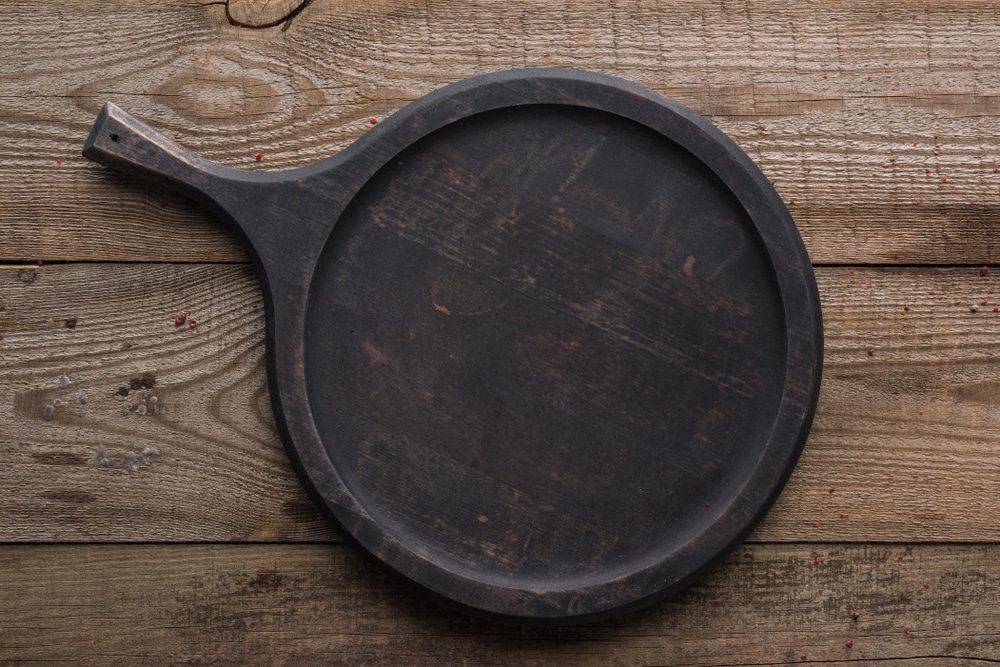
Pizza is one of the most common food items served around the globe in restaurants, cafes, food trucks, and pizzerias because its popularity is rising. However, to make the pizza that everyone loves, you must understand the difference between a pizza pan with holes vs. without holes. Since they have a different build, it will obviously result in the different texture of the pizza, so let’s see how these two are different from each other!
Pizza Pan With Holes vs No Holes
Holed Pizza Pan (The Ones With Holes)
To begin with, these pizza pans are also called perforated pans and are made from aluminum material, which is one of the most distinguishing factors. As the name suggests, these pizza pans have holes in the bottom which means the base of the pizza will be directly heated, which results in faster cooking. However, it also means hot and cold spots because some parts of the pizza base won’t get direct heating.
The pizza pans are perfect for achieving the crispy crust, primarily because it allows the inflow of air into the pizza while quickening up the pizza cooking process. In addition to the crunchy and crispy crust, the pizza pan is great for baking pizza with fewer calories as compared to pizza made in the deep pan. The primary function of these pizza pans is to reduce the moisture and allow directing heating of the base.
However, it doesn’t mean that pizza pans with holes are all great because it’s not suitable to use them to bake the pizza with a thick crust. To illustrate, this pan is a promising choice for making thinner crust pizza that is crispier and less chewy. The best thing about using a perforated pizza pan is that it won’t adversely impact the flavor of the pizza. As far as oiling the pizza base is concerned, you can opt for a cooking brush for running oil on its surface.
On top of everything, the pizza pan is a great choice for even cooking the pizza because the holes are designed uniformly throughout the pan. In addition to cooking pizza, it’s also a great option for reheating the leftover pizza without losing the texture and flavor (nope, it won’t dry). However, while making pizza in this pan, you must keep a close eye because it often results in the burning of the pizza. Not to forget, these pans aren’t versatile as you can only use them for pizza.
Pizza Pan With No Holes
If you are someone who loves cooking chewy and soft pizza, you can opt for the pizza pan without holes. This is because these pizza pans don’t allow free airflow, and it won’t result in moisture loss either. This cooking mechanism delivered by a pizza pan without holes leads to the soggy center of the pizza. Also, there will be excessive moisture which results in a softer crust, and it’s obvious that the crispiness won’t be there as you would get from perforated pans.
These pizza pans are integrated with a thick base, which means a longer timespan is needed for absorption of the heat and building it up. Consequently, it’s pretty obvious that the cooking process will take longer as compared to cooking pizza in a pan that has holes. In most cases, the toppings of the pizza won’t be evenly cooked, especially if you are making pizza in these pans for the first time. To illustrate, you must provide enough time for heat to be transferred pizza’s top.
The hole-less pizza pans are actually extremely versatile because they are suitable for cooking roasts, cakes, and pies, along with other baking items. On top of everything, it’s extremely convenient to clean these pans because there are no holes with stuck dough and ingredients (you can even put them in the dishwasher). The best thing about pizza pans without holes is that you will be able to regulate the cooking experience.
When it comes down to cooking pizza in the pizza pan without holes, you must remember that the internal part will be chewy and mushy like cake. Also, since these pans are made from thick materials, they take longer to heat up.
To summarize, both of these pizza pans are great, but it all depends on what texture you want to achieve for your pizza.